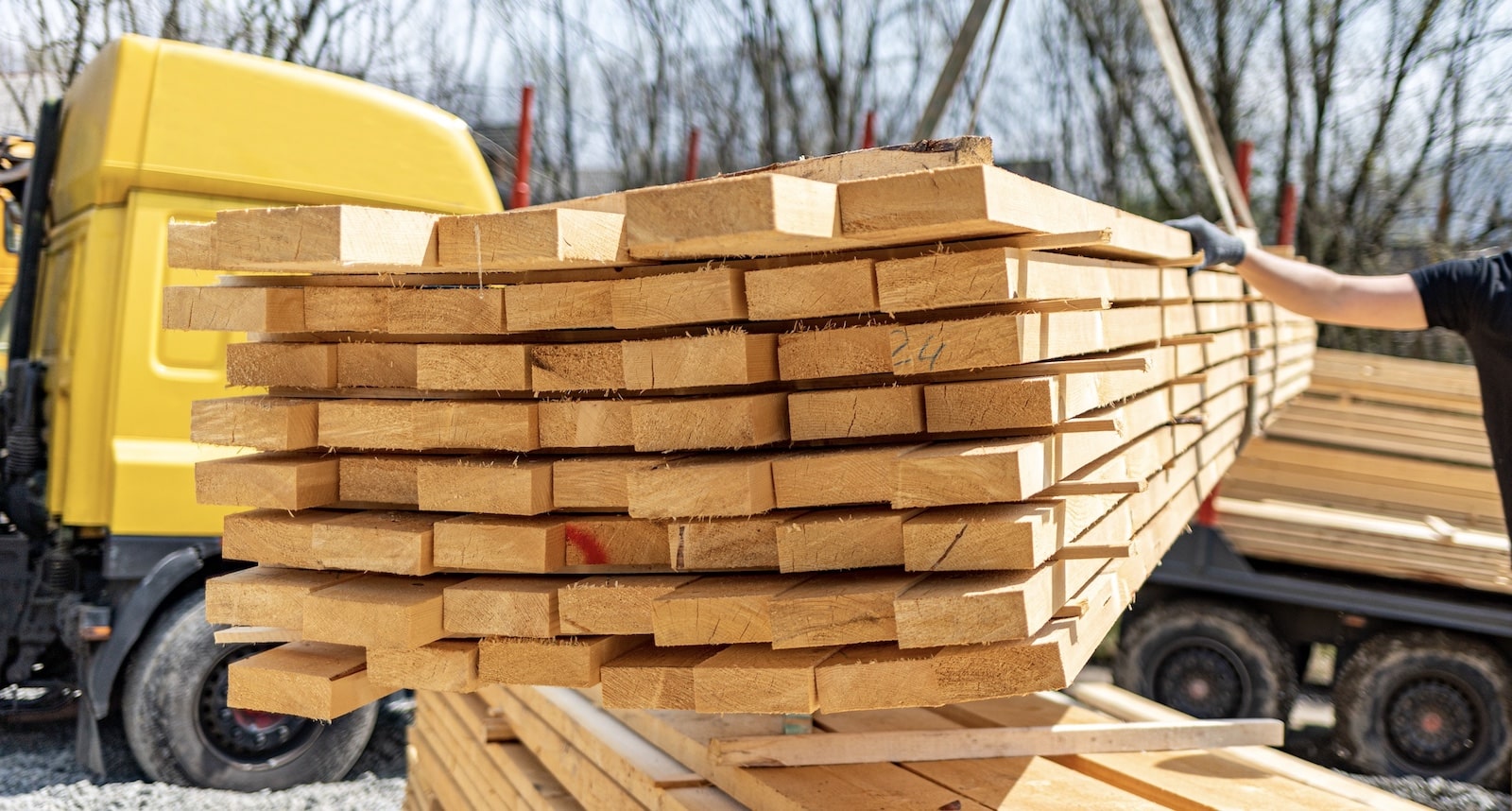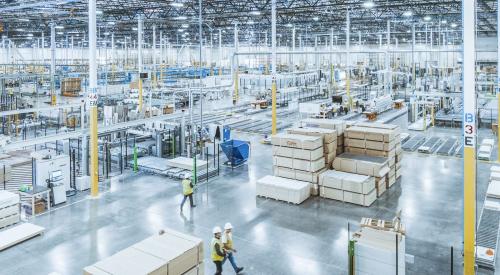The vulnerability of the supply chain has been exposed by manufacturing shutdowns and slowdowns induced by the pandemic, winter storms, and bottlenecks at ports, coupled with robust demand for new-home construction. But those fractures also reveal an opportunity for whichever entity can shorten that chain for home builders.
Gone are the days when builders simply submit their purchase orders and assume the items will show up on schedule. The purchasing role has changed to one that involves daily, if not hourly, conversations with trade partners and suppliers about lead times, order status, possible product substitutions, and, if necessary, even finding alternative vendors.
Steps to Shortening the Home Building Supply Chain
“I feel there’s an opportunity for some innovative dealer out there to go back to bundling a whole package and say, ‘Look, I’m going to guarantee that I’ll deliver this bundle of not just framing but insulation and windows, and it will be on time on site, and I’m going to charge an additional margin in exchange for holding some of that supply-chain risk,’” says Todd Tomalak, who oversees building products consulting and research as a principal at John Burns Real Estate Consulting. “Some of these dealers could be pushing their own private-label products. I don’t know if anyone has figured it out yet, but it’s the right recipe.”
Buying direct from manufacturers is the low-hanging fruit for shortening the supply chain and is an advantage within reach of big builders with buying power. PulteGroup, with nearly 21,000 closings across 22 states in 2020, has had success converting some building materials contracts—particularly for appliances—to direct buys from the manufacturer.
RELATED
- Data-Driven Builders Leave the Guesswork Behind
- Home Builders, How’s Your Supply Chain?
- Now Is a Good Time to Review and Refresh Your Materials Supply Chain
“We do see some embedded inefficiency, depending on the category you’re looking at, with layer upon layer of distribution, sometimes layers that are not handling or touching the product,” said Ashley Potter, area VP of procurement for PulteGroup, during a recent “Rethinking the Supply Chain” webinar hosted by Housing Innovation Alliance. “That is something we spend a lot of time on, challenging ourselves and our teams on the value-add in each step of the process. We’re buying a tremendous amount of material direct, so we’re seeing more sophistication and collaboration in the way we’re communicating and sharing information with demand planning.”
Greater Leverage for Big-Box Retailers in the Home Building Materials Supply Chain
Manufacturers would be expected to dictate terms and allocations in a market with constrained supply, but the big-box retailers are gaining leverage. For example, when many builders were unable to secure appliances from their usual suppliers in time for move-in, they sent their purchasing managers, armed with credit cards, to Best Buy to purchase refrigerators, ranges, stoves, and dishwashers.
“Five years ago, you wouldn’t think about Best Buy being in this industry at all, yet we had an integration with their back office where builders started using them for fulfillment, and we’re now able to push orders to Best Buy,” says John Ballard, division president, supply chain, for Hyphen Solutions, a provider of cloud-based construction management software.
The challenge for big-box retailers is building the infrastructure to become the go-to supplier for builders while simultaneously serving contractors and consumers.
Other big boxes such as The Home Depot, Menards, and Lowe’s have contracts with appliance makers that require manufacturers to give them priority over smaller competitors on deliveries. If those retailers can get “favored-nation status” for appliances they probably could do the same for other products too, says industry consultant and purchasing management veteran Tony Callahan, who has handled procurement duties at national builders including NVR, Shea Homes, and Beazer Homes.
“As much as builders buy a lot of appliances and materials, we pale in comparison to those big-box stores,” Callahan says. “So it’s just good business sense that you’re going to take care of your largest customer.”
Both Lowe’s and The Home Depot are exploring how they can expand their delivery service, he says, but they’re not focused on builders yet. “They’re focused on homeowners, and how they can do more of an Amazon-type delivery for a product,” Callahan says. “But it’s a lot easier to be the Amazon of building materials for home builders than for homebuyers because with just a couple of stops, you can fill up a truck. A homeowner is never going to do that.”
However, the challenge for those retailers is building the infrastructure to become the go-to supplier for builders while simultaneously serving contractors and consumers. Those stores already are taxed by demand from contractors and currently struggle with consistency of supply because a contractor can walk in and buy up all of the siding that another contractor wanted delivered to his or her job the following week.
“[Big-box retailers] have to do something with their distribution centers,” Callahan points out. “I’ll be surprised if they don’t. I think there’s an opportunity for them.” .
RELATED
- Are You Ready for Build to Rent?
- Material Issues Spark Interest in Building Innovations
- The Off-Site Versus On-Site Construction Debate [VIDEO]
The Rise of the Super Sub
Builders FirstSource is a player that could radically shorten the supply chain. In August 2020, the Dallas-based supplier merged with millwork and Ready Frame provider BMC to create a company with 550 distribution and manufacturing locations in 42 states as well as 44 of the top 50 U.S. metro markets.
“They’re the largest building materials dealer in North America, and they specialize in the last mile,” Callahan says. “If anyone is positioned to do it, it could be them, and those larger big boxes, because they have the distribution centers.”
One approach of owning the last mile could be combining several product categories or trade services into a single provider; something akin to what George Casey, president and CEO of consultancy Stockbridge Associates calls “super subs”: One super sub handles preparing the lot and pouring the foundation; another takes care of materials and labor for framing and installing cladding, windows, doors, and doing the painting; another takes care of mechanicals, electrical, plumbing, and so on.
PulteGroup’s Potter notes that if more home building moves to off-site construction and technology makes installation in the field simpler, that could lead to the emergence of more companies that are multifunctional in terms of the job scopes they deliver.
“The [delivery of sub-assemblies instead of pieces] is evolving rapidly and we’re seeing an evolution that is moving in the direction of someone who can integrate cabinets, countertops, and flooring, for example; one provider—kind of a multifunctional trade—to integrate all three,” she says.
Supply-Chain Target No. 1: Single-Family Rental Builders
If the supply chain is radically shortened, be it from integrating trades and product categories or by creating a logistics and distribution juggernaut, Tomalek expects it would happen first with an innovator targeting builders of single-family for-rent product. Among the fastest growing sectors, building detached homes for renters is easier and occurs at a faster pace than building for-sale homes because the plans can be standardized and there’s no waiting for selections or change orders. Builders and developers of single-family for-rent units also may be willing to pay more for materials that are more durable and require less maintenance, if they’re going to hold on to these units for rental revenue.
“This is the type of environment where, if anyone should be able to figure this out, it should be a Home Depot, Amazon, or someone like that,” Tomalak says. “I could see a company figuring out a way to remove three or four weeks from the cycle and having the capital to do it. I’m not saying that’s what’s going to happen, but if I had to say where the innovation would come from, I bet it will happen on the distribution side before the manufacturing side. And if it does happen, it will be with single-family rental. That will be the place.”













